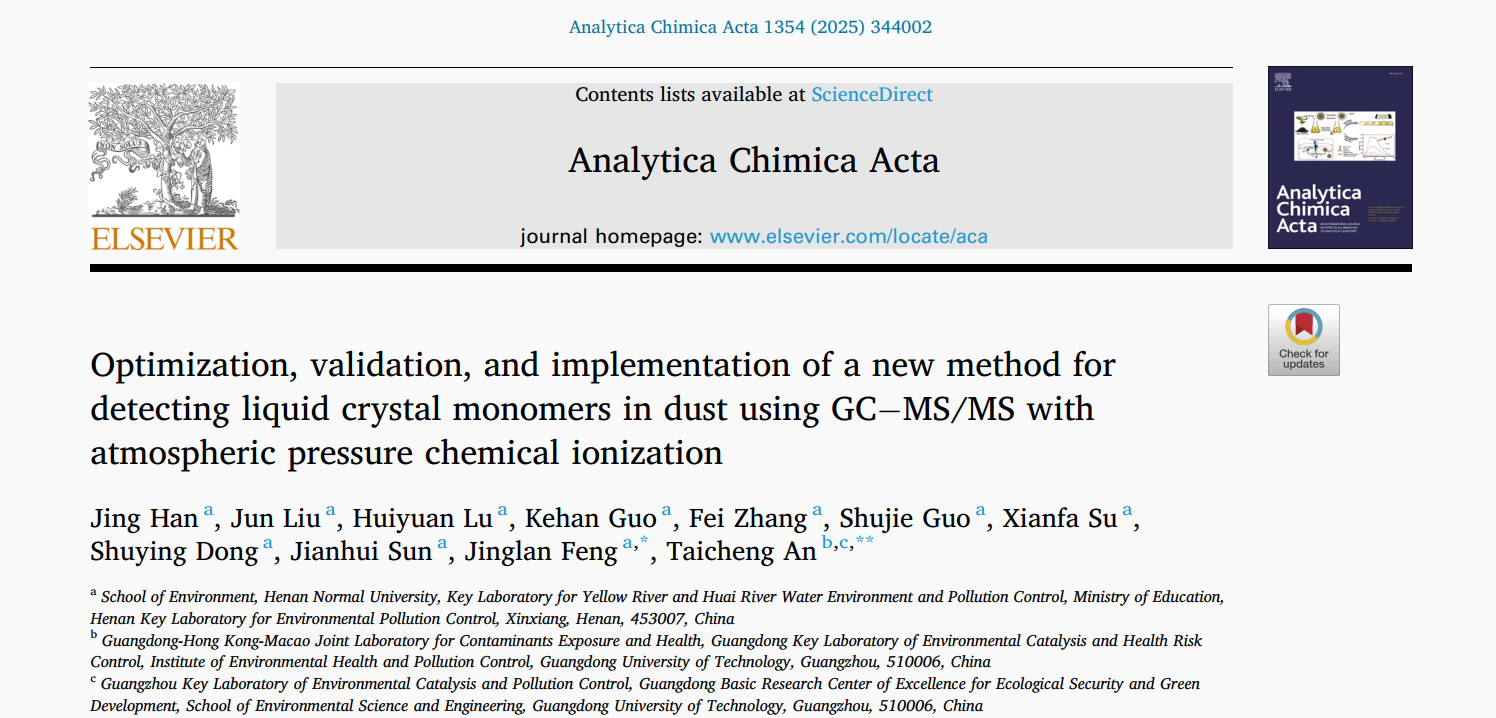《Optimization, validation, and implementation of a new method for detecting liquid crystal monomers in dust using GC− MS/MS with atmospheric pressure chemical ionization》

Website:https://doi.org/10.1016/j.aca.2025.344002
Graphical Abstract:

ABSTRACT:
Background
Liquid crystal monomers (LCMs) are a new class of emerging pollutants. To assess their occurrence, behaviour, and potential risks, a sensitive and selective analytical method is required for the determination of LCMs at trace levels in multiple environmental media. Toward this end, an improved GC−MS/MS method was developed and validated for the quantification of LCMs.
Results
The method integrates atmospheric pressure chemical ionization (APCI) with GC−MS/MS. Under optimal instrumental conditions, the instrument quantification limits of LCMs reached as low as 0.02 pg·injection-1, which can be attributed to the generation of high-abundance molecular ions/quasi-molecular ions under APCI. Compared to previously published methods, the developed method in this study reduces the method detection limits of LCMs by approximately 1−38.7 times, enabling the analysis of LCMs at concentrations as low as 0.02 ng·g-1 in dust samples. This improved approach was applied to both indoor and outdoor dust samples. The concentrations of LCMs obtained in this study are consistent with those reported in previous research, demonstrating high detection frequencies of fluorinated LCMs and their predominance in dust.
Significance
The developed method in this study is not only applicable to dust samples but also readily extends to other environmental matrices, thereby facilitating the investigation of the occurrence, origin, and migration of LCMs in various environments.